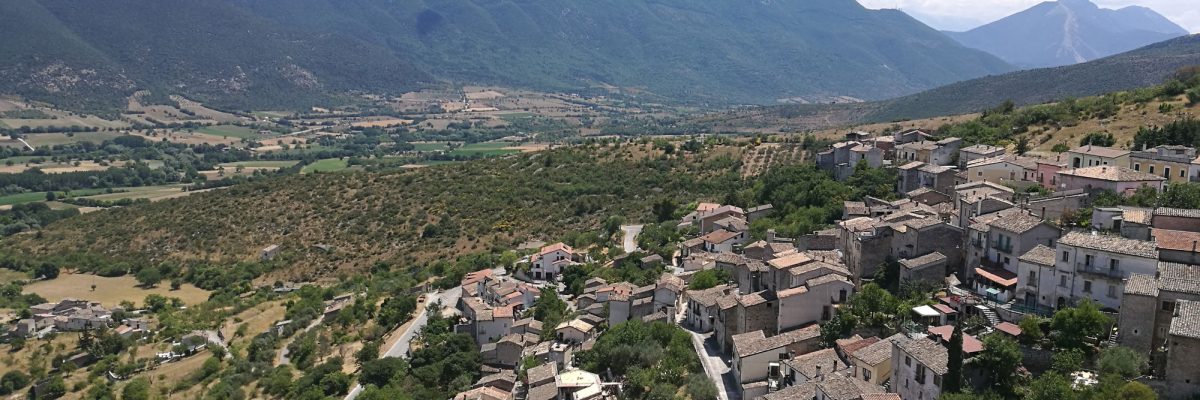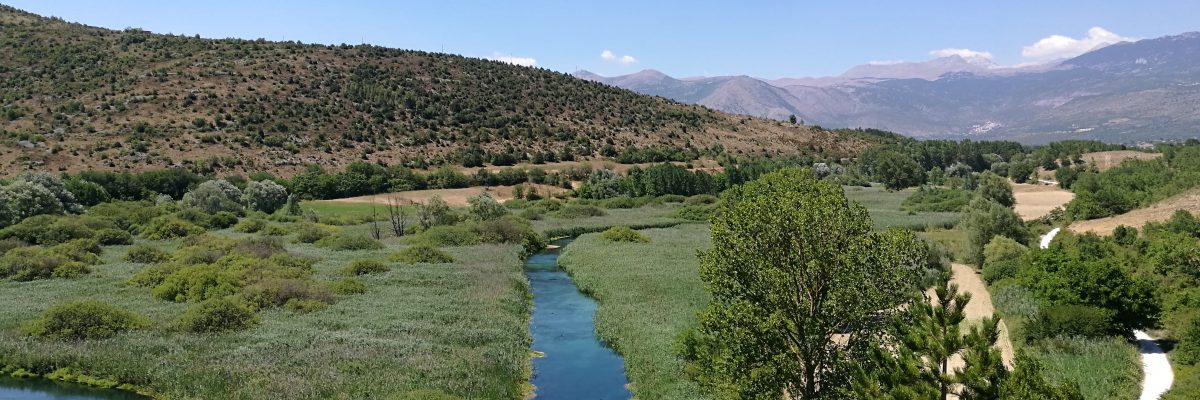Crossed by the homonymous Tirino river, one of Italy’s most beautiful and cleanest rivers, the Tirino Valley is immersed in the green, in the heart of Abruzzo. It is situated in an area surrounded by the towns of Bussi-on-Tirino (345 m above the SL), Capestrano (505 m above the SL) and Ofena (531 m above the SL). Lying within the two provinces of Pescara and L’Aquila, it is among the most impressive areas of the Gran Sasso and Laga Mountains National Park.
Situated at an altitude of about 350 m above the SL, the Valley takes the form of a wide basin of tectonic origin, with considerable accumulations of lacustrine sediments dating back to the ancient quaternary.
In 1995, a great part of the Tirino Valley was reinserted within the territory of the Gran Sasso and Laga Mountains National Park, whereupon the environmental and territorial protection guidelines were reinforced when the three water springs and the upper part of the river were included in the Special Protection Zone (ZPS), within the European Community Program, “Nature 2000”.
The Valley is surrounded by important massifs of calcareous origin: the heights of Rocca Calascio and Castel del Monte, in the north; the Navelli sierra descending toward Bussi with Mount Cornacchia and Mount Le Scuncole, in the west; and the Gran Sasso dorsal, heading toward east north-east, with important reliefs such as Mount Cappucciata, Mount Scarafano, Mount Picca, Mount Alto, Mount Pietra Corniade and Mount Roccatagliata.
Besides containing lots of naturalistic beauties, the Tritan territory overlooks several landmarks of remarkable importance: Capestrano’s Piccolomini Castle; Bussi’s Dukes of Cantelmo Castle; the Capestrano archeological area, where one of the most important icons of Abruzzo, the world-renowned “Capestrano Warrior”, was discovered; and the Romanesque churches of Saint Peter ad Oratorium and Our Lady of Cartignano. In addition, today the Valley offers a variety of cultivations: wines and gastronomic products, with Ofena’s famous vineyards, in the upper Tirino Valley, and the typical orchards along the river, traditionally referred to as “padure”(marshlands) and “cannavine” (hemp fields), with their peculiar irrigation system consisting of canals ploughed in the soil to draw water right from the Tirino river.
THE FLOW OF HISTORY IN THE TIRINO VALLEY
The finding of a bone fragment of a young male’s femur on mount Serra, in the upper end of the Tirino Valley, in today’s Ofena territory, gives evidence of the first human presence in the Tirino Valley, with cave settlements dating back to 80,000 years ago, the ancient stone age, in full Paleolitic era. Subsequently, around 5,000 years ago, the caves began to be abandoned and the first open air living settlements were established near Capo d’Acqua, very near one of the Tirino’s three main springs.
Around the year 1000 b.C., men began to better get acquainted with iron and the subsequent metal manufacturing of tools, utensils and weapons. This is the era to which important evidence of the presence of Italic people dates back to. Here, they were represented by the “vestini”, who lived in small hamlets and villages. At the time, the settlement in Collelungo, between Capestrano and Ofena, was the most important village in the Tirino Valley.
In the middle of the 1st century b.C., the emperor Claudius ordered the construction of a consular road to connect the city of Rome with the Adriatic coast. This artery crossed the whole Tritana Valley and, most likely, it coincided with some of the many sheep-tracks of the transhumance, which dealt with transferring sheep flocks from the Gran Sasso highlands to the Puglia plains by passing through the Tritana Valley.
Mostly in the past, there was always, along the riverbanks, a concentration of most of the economic and commercial activities that characterized the daily living of the local communities. These activities included common basket and conic fishing-basket weaving, ceramics craftsmanship, plus the agricultural productions in marshes and hemp fields, herd breeding and trout and crayfish fishing. All the products of these activities were taken to the large Tirino market on the riverbanks where other products were brought such as Navelli’s saffron, Castel del Monte’s cheese and Santo Stefano’s lentils. Also the transhumant shepherds stopped, for a few days, at this market, and participated in the commercial exchange of their sheep products before continuing with their trip toward the Puglia’s mild plains.







